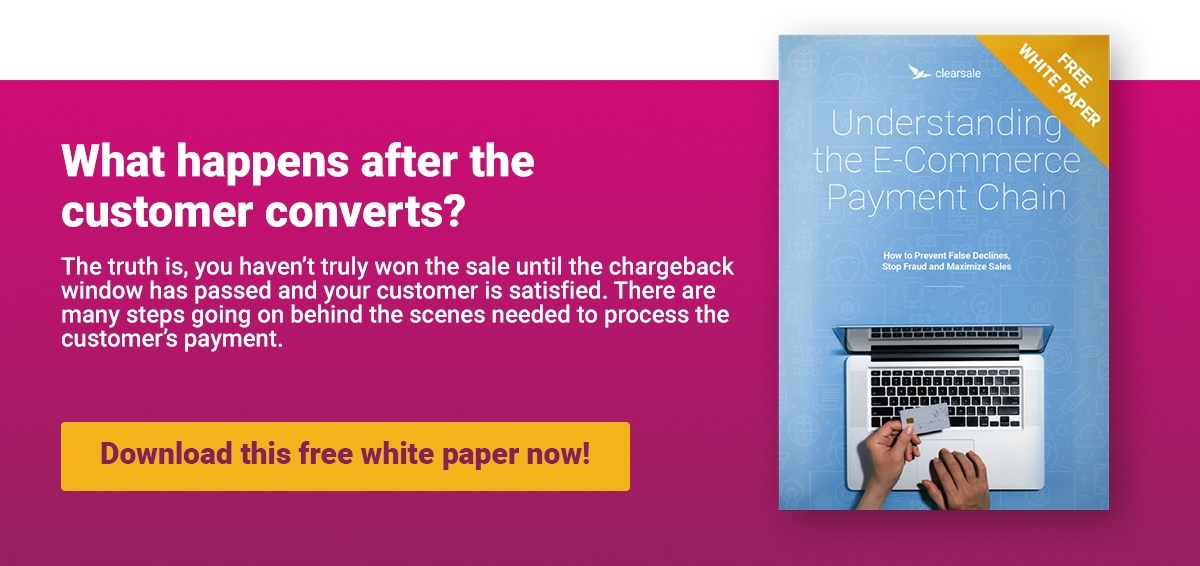10 Things Online Retailers Can Do Today to Reduce Chargebacks
An unavoidable part of e-commerce, chargebacks can be one of the biggest challenges a merchant faces. Not only does the retailer lose the value of the product and the merchandise itself, but they’re also out the time, money and effort spent to research and dispute the chargeback. Add to this the associated fees and penalties and the risk of losing the ability to process credit card transactions, and it’s no surprise that merchants are looking to minimize their risk of chargebacks.
While merchants may not be able to eliminate chargebacks completely, there are several easy ways for online retailers to reduce their risk exposure. Here are 10 easy changes e-retailers can implement today to significantly reduce their risk of chargebacks — and increase their odds of winning those inevitable disputes.
1. Answer every question
When a customer is shopping online, they want to know that what they see is what they’ll get. That’s why every product page should include a thorough description, including pictures from multiple angles, descriptions and sizing charts (if applicable). Merchants selling services should include a comprehensive list of features and functionality. Make it easy for a customer to contact customer service if they have product or service questions.
2. Know your customer
Keep detailed customer records and account histories. Online retailers who know their customers’ browsing, shopping and spending habits are better prepared to identify any suspicious transaction patterns outside the norm.
3. Keep the lines of communication open
Every merchant should offer clients a 24/7/365 communication option, whether that’s a call center, a monitored email account, an online account management portal or a chat screen. The easier you make it for customers to contact you, the less likely they are to seek other means of problem resolution, like chargebacks.
4. Don’t let recurring charges be a surprise to customers
Merchants who offer subscription-based or recurring billing purchases should contact customers in advance of each purchase, detailing the billing date, the amount and the reason.
5. Require signature or delivery confirmation for each order
A signature obtained at delivery increases a transaction’s security by telling a merchant exactly when an order was delivered and who received it. It can also be a critical piece of evidence in the merchant’s favor during a chargeback dispute. Delivery confirmation can be used as a less expensive method of documenting delivery.
6. Update credit card descriptors
Customers often initiate chargebacks because they don’t recognize a merchant charge on their credit card statements. Make sure the descriptor used is the same name that appears on the website customers are purchasing from (note that this may be different than the company’s legal name). Merchants can even consider using their URL as their descriptor.
7. Make free trials truly free
Customers shouldn’t have to enter their credit card information to begin a free trial. Not requiring payment data up front may net fewer “forgot to cancel” subscribers, but those customers often end up filing chargebacks or requesting refunds for the additional billing anyway. Waiting to request payment data until the end of a free trial also demonstrates that the customers who sign up really want to be customers.
8. Don’t make customers hunt for store policies
Online retailers should make it easy for customers to find billing, cancellation, return/exchange and refund policies. Include links to this information on shopping pages, at checkout, in shipping updates and in follow-up surveys.
9. Consider charging installments for yearly services
If customers are paying for a year of a service, that’s exactly what they expect. So if customers experience a service interruption or problem (even on day 360), they may file a chargeback. And that means the entire amount — not a prorated credit — will be refunded to them. Monthly billing can reduce retailers’ risk of a big chargeback loss.
10. Offer refunds
A disgruntled customer is going to find a way to get their money back. Merchants know that if a transaction dispute escalates to a chargeback, rulings generally favor the customer. To avoid this, merchants should consider reaching out to the client and offering a refund. A chargeback (whether ruled in favor of the client or the merchant) affects a merchant’s chargeback ratio, which can negatively affect the way e-retailers do business. Refunds have no such impact and can even serve to improve the merchant/customer relationship.
When a merchant’s ability to successfully build their business depends on reducing the risk of chargebacks, e-commerce retailers need solutions they can trust. The 10 strategies offered here are just the start; merchants should also consider implementing a fraud protection solution that includes 100% chargeback protection — increasing their peace of mind and their revenue. Contact a ClearSale analyst today to learn how our chargeback protection can help you grow your e-commerce business safely.
 Sarah Elizabeth
Sarah Elizabeth

